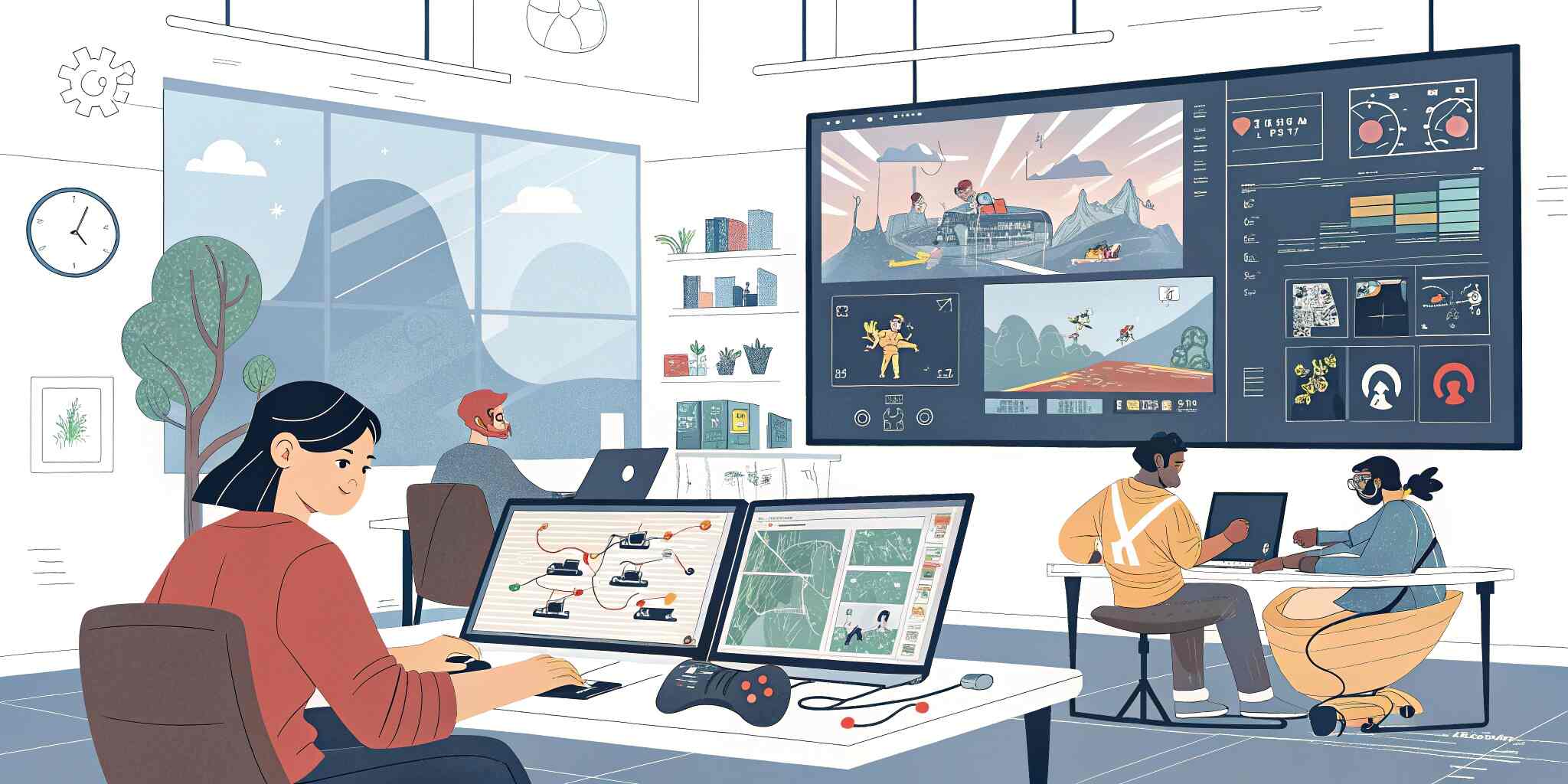Procedural generation (PG) is a game development technique that uses algorithms to create data automatically rather than manually. It brings endless possibilities to games by generating content such as levels, terrain, characters, and quests on the fly. This approach not only reduces development time and file size but also enhances replayability and player engagement.
From indie games to AAA titles, procedural generation is now a core design tool—especially in open-world, roguelike, and sandbox genres.
What is Procedural Generation?
Procedural generation refers to the algorithmic creation of game content during development or at runtime. Instead of building every asset or level manually, developers define a set of rules or parameters, and the algorithm handles the rest.
Benefits of Procedural Generation
- Infinite Replayability: Each playthrough can feel fresh and unique.
- Efficient Storage: Generates assets dynamically, reducing storage requirements.
- Creative Freedom: Enables developers to create complex, expansive environments with less manual effort.
- Emergent Gameplay: Unpredictable scenarios and player-driven storytelling emerge from randomness.
Key Techniques in Procedural Generation
1. Noise Functions (e.g., Perlin, Simplex Noise)
Used to generate realistic terrains, textures, and weather patterns. These mathematical functions simulate randomness with natural-looking variations.
2. Randomized Tilemaps
Perfect for dungeon crawlers or roguelikes, tile-based procedural maps use randomized rules to create new layouts every session.
3. L-Systems (Lindenmayer Systems)
Useful for generating fractal structures such as trees, plants, and cities. This recursive method mimics natural growth patterns.
4. Grammar-Based Generation
Applies formal grammar rules to build complex structures—like quests, dialogue trees, or entire stories.
5. Agent-Based Systems
In this method, virtual agents simulate environmental or social behaviors, influencing the world dynamically (common in sim-style games).
Famous Games That Use Procedural Generation
Minecraft
Minecraft’s world is generated using Perlin noise and various biome algorithms, allowing virtually infinite exploration.
No Man’s Sky
This space exploration game uses procedural generation to create over 18 quintillion planets, each with unique ecosystems, terrain, and lifeforms.
Spelunky
Every level in Spelunky is procedurally generated to ensure that no two runs are ever the same, driving its roguelike appeal.
Dead Cells
This action-platformer uses procedural level layouts combined with handcrafted elements for a balance between chaos and design.
Enter the Gungeon
Another roguelike that thrives on its procedurally generated dungeons, weapons, and loot for high replay value.
Challenges of Procedural Generation
- Loss of Design Control: Over-randomization can lead to dull or broken experiences.
- Repetitiveness: Without variation logic, environments may start feeling too similar.
- Testing Difficulties: It’s harder to QA test dynamically generated content.
- Complex Balancing: Keeping gameplay fair while unpredictable is a design challenge.
Tips for Using Procedural Generation Effectively
- Combine handcrafted elements with procedural content for more structure.
- Use seed-based generation for repeatable randomness.
- Add constraints and rules to maintain quality and playability.
- Keep player experience in mind—procedural doesn’t mean random chaos.
Conclusion
Procedural generation is a powerful technique that, when used wisely, can dramatically enhance the depth and longevity of a game. Whether you're building endless terrains or unique character traits, procedural methods open up a world of creative opportunity for developers.
With the right balance between algorithmic design and human touch, developers can build experiences that surprise, challenge, and delight players every time they hit “Play.”


